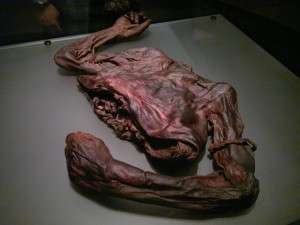One of the most eye-opening experiences I’ve had regarding death was on a tour of The Island Crematorium in Cork, Ireland. I’d never been inside a crematorium, or funeral home for that matter, and I was very taken aback by how the layout and architecture of the crematorium impacted one’s thoughts as well as emotions. As one of the directors led us around, I found that the atmosphere was very peaceful and seemed to be separated from the outside world; perhaps this was due to the high walls and tunnels or that it is on an island. The director took us into the different sections and rooms of the crematorium and explained what occurred or happened during funerals. He discussed how a ceremony would typical run and even showed us what the audience would see when the body would be taken back to be cremated at the end of the ceremony. The casket laid in a little cut out section of the wall in the front of the room and painted glass doors book-ended each side. Once the ceremony ended, the doors closed together, hiding the casket. To see this acted out, it was very surreal and also I felt like the closing of the doors could act as a type of closure for the friends and family of the deceased. The director took us then to a room with all the urns people could choose from. It was interesting to see the variety in the different kinds of urns. They ranged from small boxes, to vase-like urns or decorative jars and there was even one that was inside of a teddy bear. This tour made me think about how important it is for us, as humans, to deal with death through ritual and made me reflect on how I think about death.
Here is a link to the site of The Island Crematorium. It has a really nice virtual tour of The Island Crematorium and I definitely recommend using it!

